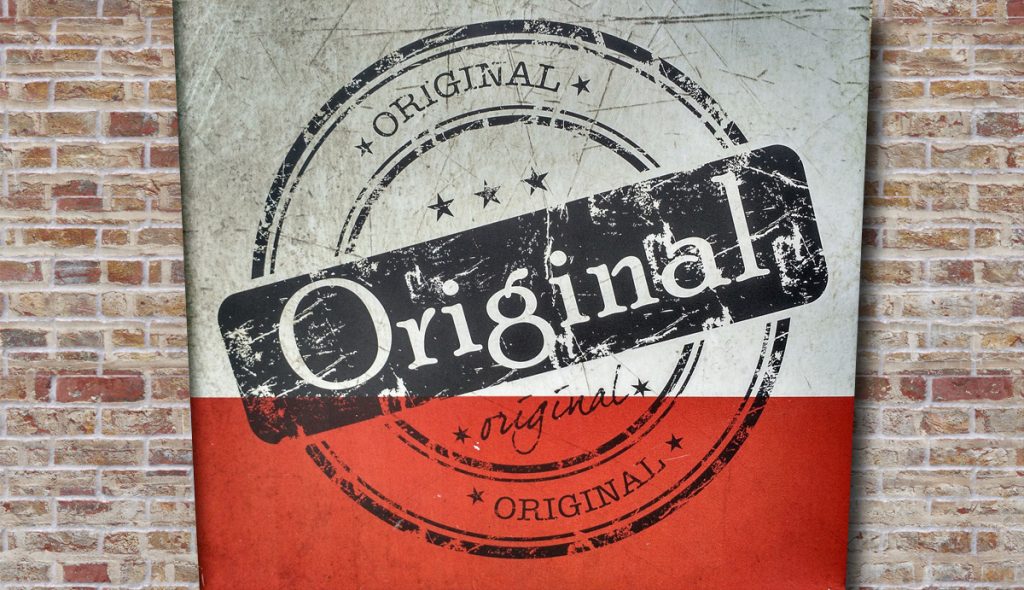Do you have a content strategy?
Writing your own content can be hard. Even harder if you don’t have a strategy to guide what you’re creating.
Having a good content strategy in place will help you make sure you’re talking about all the right things and reaching all the right people.
But where do you start?
Quick links
Scroll down to read the full article, or use one of these quick links to find the full explanation.
Here are 29 content types to inspire you
Here’s a summary of 29 different content types you could be using on your blog and how they’ll help you and your readers.
1. Attracting content
Attracting content does what it says on the tin. It attracts the kind of prospects you want to work with to your website and it makes the prospect of working with you seem attractive.

With attracting content, you can:
- Describe your ideal customer and why their particular circumstances mean they get the best results
- Show why your product/service is a good investment and give examples of what you’ve achieved
- Explain why prospects should specifically choose/buy from you.
2. Authoritative content
Authoritative content is about building your authority in your industry and on Google. One of the best ways to do this is to build a spectacular and unrivalled content resource. A one-stop-shop that answers as many of your audience’s questions as possible, so they don’t need to go anywhere else.

Authoritative content can also include:
- Thought leadership articles and opinion pieces
- Comments on the latest industry news and updates
- Introductions to new innovations and technology
- The busting of common myths and misconceptions.
3. Calendar content
Calendar content is only ever temporary, but it’s a good idea if you’re working to a schedule and you need to keep your audience in the loop.
Examples of calendar content might include:
- Trade events you’ll be attending and why your audience should attend, too
- Details of events where you’re speaking, presenting or hosting sessions
- Charity events you’re running and how your audience can participate
- National/global special days, weeks or months you’re observing
- Upcoming sales, presales, launches and offers.
4. Change/evolution content
Change content is about changes in your business or industry. This kind of content is a good way to demonstrate to your audience that you’re progressive, forward-thinking and open to making changes for their benefit.

For example, you might look at:
- How your industry has changed/is changing and how this affects your customers
- Why you’re making changes and how that will benefit your customers
- How you’re making progress and making things better for customers.
5. Call to action content
Call to action content is content with a clear call to action at the end. This content is designed to trigger your readers to take a particular course of action.
For example, call to action content might:
- Give a preview of forthcoming email content your subscribers will be getting
- Introduce a lead magnet you’ve created and provide a download link
- Talk about the exclusive benefits your email subscribers get
- Unveil a new product/service you’re offering and link to it.
6. Curated content
Curated content is content you pull together from other websites to create a useful and insightful resource. These posts are helpful for your audience because you’ve done the hard work for them and brought all the information they need together, in one place.
Curating posts from reputable sources is good for you, too. It will position you as a brand that can be trusted, strengthen your reputation and help you build your audience.
The curated resources you’ve created can also be incredibly shareable. But you need to keep them regularly updated — especially if they’re statistics — so they’re always current and relevant. And that means updating the entire piece of content — not just the year in the title!
Curated content can include things like:
- Lists and countdowns
- Interview soundbites/quotes
- Statistical information on a topic
- Lookbooks/swipe files/inspiration guides.
7. Explainer content
Explainer content is content that explains things. Shocker, I know. There are always things businesses need to explain to their readers. Having this content on your website will keep your readers engaged. Linking to it in your other more in-depth content will help to keep them on your site if they find something they don’t understand.

Explainer content might include:
- Definitions or glossaries of terms e.g. What is explainer content?
- An explanation of your service
- Explaining how something works
- Translating something complex into plain English.
8. How-to content
People look up how to do things online and they find tutorials to guide them through the process. Providing these tutorials could help to position you as an expert they need to know. Or you could introduce them to your product or service, which help them achieve their desired result.
For example, your how-to content might cover:
- How to prepare a meal
- How to improve your skills
- How to achieve a look or effect
- How to fix something that’s broken.
9. Informational content
Informational content satisfies your readers’ need for information. It shows them you understand what they need to know and can explain it in a way that’s clear and makes good sense. When readers see you as a trusted source of information, they’ll be more likely to come back and more inclined to buy from you when the time is right.
Informational content might include things like:
- Rules and regulations
- Educational resources
- How-tos and guides.
10. Inspiration-based content
People need inspiration for all sorts of reasons. Being the brand that gives it to them shows you have good ideas — and good ideas count for a lot. Inspiration-based content is shareable and can include your own products.

Inspiration-based content might cover things like:
- Crafting
- Interior decoration
- Personal styling
- Architectural design
- Planning for events and celebrations
- Content marketing ideas.
11. Interview content
Interviews can be enlightening for lots of reasons.
This content might include interviews with:
- Experts in your industry who will endorse what you’re doing, support your messaging and give you credibility
- Happy customers who’ll recount their good experiences of buying from you and provide social proof
- Your own employees who’ll talk about your process and show why you’re the best at what you do.
12. Mistakes-based content
Nobody wants to think they might be doing something wrong. Content that points out mistakes your readers might be making will make them curious to read it. And helping them put things right can position you as credible and trustworthy.
To be effective, the mistakes you write about and the problems they cause should be explained in a way that’s easy to understand. Giving examples can also help to illustrate the problems.

Mistakes-based content can cover things like:
- Mistakes you might be making if you DIY instead of using a professional
- Lesser-known pitfalls in your industry and how to avoid them
- Things you might be doing wrong without realising
- Common mistakes people make all the time.
13. Mythbusting content
There are always half-truths, figments and falsehoods flying around. Mythbusting content gives you a chance to step in, show your expertise and set the record straight.
Mythbusting content could bust:
- The most prevalent myths in your industry
- Well-intentioned but bad advice
- Common misconceptions.
14. Nurturing content
The aim of nurturing content is to transform problem aware leads into paying customers. This is achieved by nurturing your leads and guiding them from content that explains their problem to content that converts them.

A simple progression of nurturing content might go from:
- Problem language — to describe the problem
- Solution language — to describe how-to fix it
- Buyer guides — to show the best products/options available
- Product/service pages — to convert readers into buyers.
15. Objection-busting content
There can be all kinds of reasons why a prospect might decide not to buy from you. Objection-busting content is designed to counter those objections with better reasons to buy.
Common objections could be from prospects who:
- Don’t have the budget
- Don’t have a need for it
- Don’t think it’s for them
- Don’t think it’s a priority
- Are about to buy from your competitor
- Have tried it before and it didn’t work for them.
16. Opinion-based content
Opinions: everyone has them. But in your industry and with your experience, yours are the ones people will value.
Your opinion based content could cover opinions about:
- Changes/developments in your industry
- New industry products you’ve been testing
- Why some popular advice is not recommended
- How new rules and regulations will affect your industry.
17. Original content
Original content is content you create from scratch. This kind of content is incredibly shareable and is valued by Google. So how do you create it?

You can originate your own content by:
- Using your own experiences
- Carrying out tests and experiments
- Doing your own surveys and research
- Trying things out and writing about it.
18. Pricing content
The majority of prospects will be interested in how much you charge. It’s probably one of the first questions you’re asked when you get an enquiry — and it can be an awkward topic of conversation. So having pricing content available for prospects to read is always sensible.
Pricing content can cover things like:
- Pricing FAQs
- How much you charge and why
- Why you’re increasing your prices
- Your process and why it costs what it does
- Why you’re more expensive than your competitors.
19. Problem-solving content
Problem-solving content brings people to your website by helping them solve problems they’re having. And, if you think about it, most businesses solve a problem for their customers — even if it’s just the problem of what to cook for dinner.

Your problem-solving content could:
- Talk about a tricky problem a customer was having and the steps you took to solve it
- Discuss common issues your customers have and the options available to them
- Provide a walkthrough of steps to solve the problem
- Give inspiration and ideas to help solve a problem
- Be a troubleshooting guide.
20. Process content
Some prospects like to understand your processes so they understand upfront how you’ll be working together and what to expect from you.
So your process content could:
- Explain your onboarding process and how that works
- Describe the process you go through for a particular service
- Detail how you’re making your processes better for your customers.
21. Q&A content
All prospects will have questions — and they’ll be typing those questions into Google. Q&A content will attract those prospects and give them the answers they’re looking for.
Your Q&A content could include:
- General FAQs that you’re asked most often
- Single questions that need more in-depth answers
- Grouped questions on a particular topic or theme.
22. Recommendation content
Recommendations are always useful, whether they’re recommendations you’re giving or ones you’ve received.

You can recommend things like:
- Apps, software and productivity tools
- Blogs, books and reading materials
- Websites and resources you use
- Other companies you’ve worked with.
Or you can feature the businesses/customers that have recommended you with:
- Case studies
- Customer stories
- Before and after examples.
23. Recruitment content
If you’re a company that’s hiring, recruitment content is a win-win. It can help your applicants through the process. And it can help you find and recruit the best people for your organisation.
Your recruitment content can cover things like:
- Employee generated content to show what your company is like
- Employee stories to show individuals’ career progression
- Good-to-know information like DEI and disabled access
- How applicants can make their applications stand out
- Essential qualities you’re looking for and why
- Your recruitment process and how it works
- Benefits of working for you.
24. Repelling content
We looked at attracting content at the very beginning of the article. Repelling content is the opposite of that and it’s just as important. This content is designed to repel the prospects who aren’t a good fit for you and your products or services.

Repelling content might include articles on:
- The circumstances that would preclude a prospect from buying your product
- The kind of prospects who aren’t a good fit for your services and why
- Situations where your product/service might not work as it should
- Why it might not be the right time to work with you.
25. Sales content
People don’t read content with the expectation that they’ll be sold to. Primarily, they read it for education, information and inspiration. So if your content strategy is based solely on making sales, you’re doing it wrong — but the odd sales post is okay.
Sales content might include things like:
- Buyer guides and inspiration posts
- An objective exploration of the best options for different scenarios
- Upselling of peripherals, extras and customisation to existing customers.
26. Tie-in content
Tie-in content is content that ties in with a special calendar event. There are lots of opportunities for tie-in content throughout the year, but it should be relevant to your business or something you really care about.
This content can be a good opportunity to talk about your values and what you stand for as a brand. This, in turn, will help you attract more right-fit customers.
Tie-in content might include:
- Celebrating a special event that means something to you e.g. Pride month
- Taking part in an event for a charity your business supports e.g. March for Men
- Commemorating an anniversary of something relevant e.g. an invention that’s integral to your business
- Talking about policies/processes that pertain to an event e.g. Disability month or World Environment Day.
27. Tips and tricks content
Letting your audience in on some magic tips and tricks of the trade can position you as an expert and help build their trust in your brand. Helping your audience achieve small things for themselves could give them the confidence to sign up to your mailing list. And they’ll be more inclined to bear you in mind if they need you in future.

Your tips and tricks content could include things like:
- Taster tips
- Ways to improve
- Productivity hacks
- Professional tips and advice.
28. Trust-building content
Building your audience’s trust can be key to them feeling confident to buy from you.
Trust-building content might include:
- A peak behind the scenes of your business
- Showing how you’ve overcome problems
- Demonstrations of your expertise
- Employee-generated content
- Case studies and results.
29. Values-based content
People like buying from businesses that share the same values. So showing your values in your content can help you connect with your prospects.
For example, your value-based content might cover:
- Your green values and how you’re reducing your environmental impact
- Your hiring policies and how you give chances to disadvantaged people
- Eco decisions you’ve made and green initiatives you’re implementing
- Any causes or charities you support
- Innovations and improvements.
Final thoughts
Creating a range of content like this will give you more ways to make your website visible on Google. This, in turn, will help you attract more of your ideal prospects and convert them into paying customers.
Hopefully this post has given you some inspiration for your own content strategy.
Check out other posts in my content creation category >>
Need some help with your content strategy?
Allow me to introduce myself!
I’m Jenny Lucas, a freelance content strategist and content writer with more than 15 years’ experience in creating blog content that captures, captivates and converts.
When it comes to content, I have a mind like an ideas factory and I never find myself short of things to write about.
If your content strategy hasn’t been working for your business and you need a fresh approach, maybe I can help you.
To find out more, visit my content writing page or send me a message.

You might also like…



